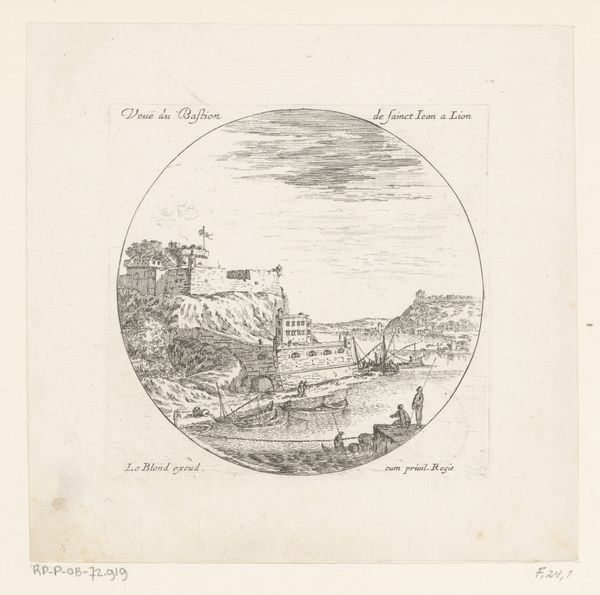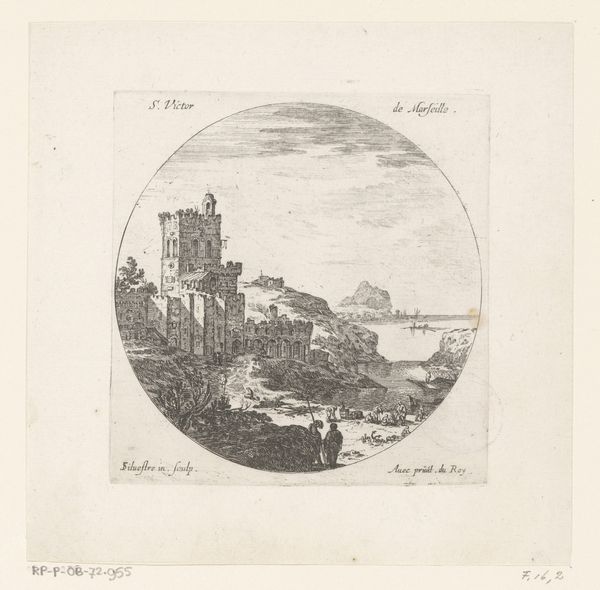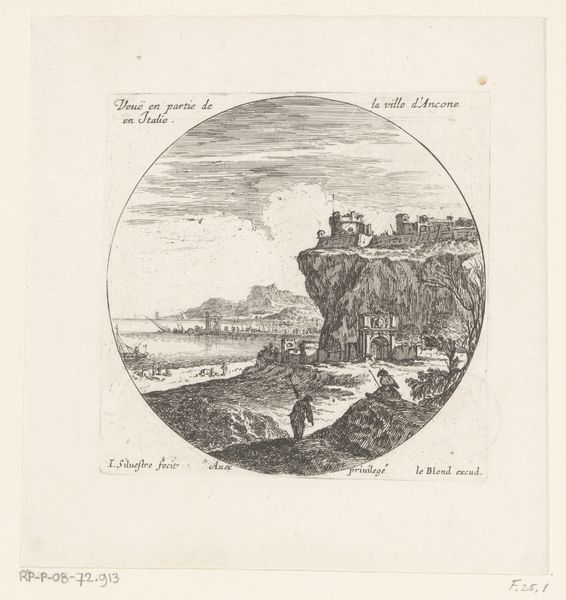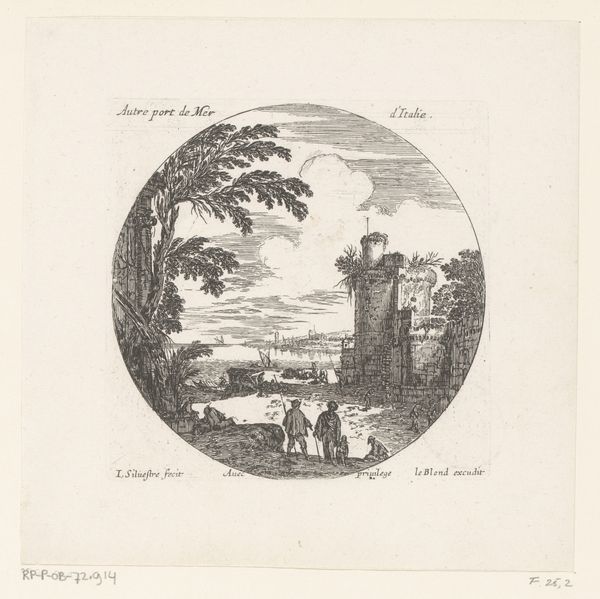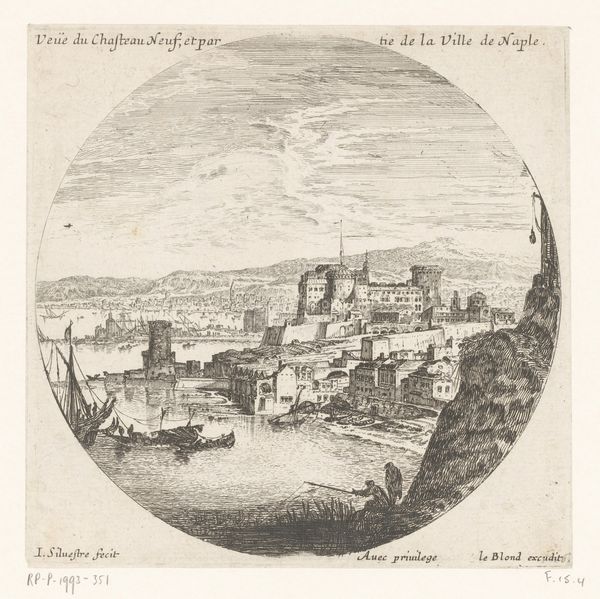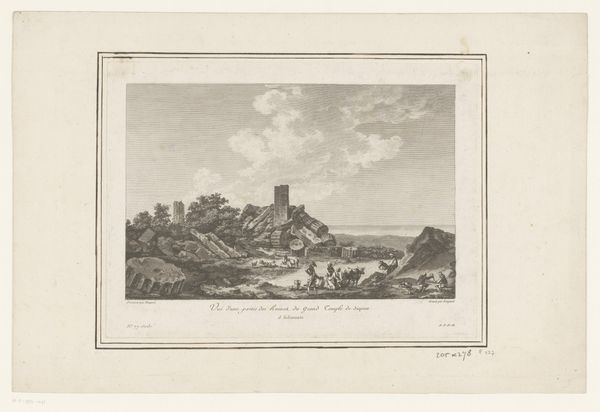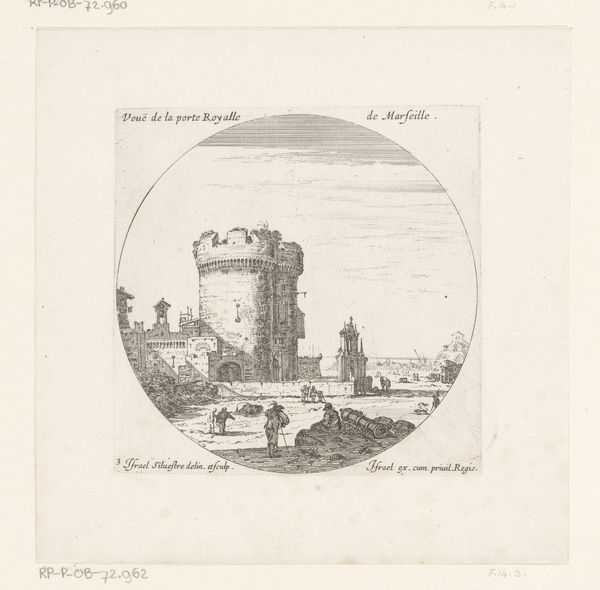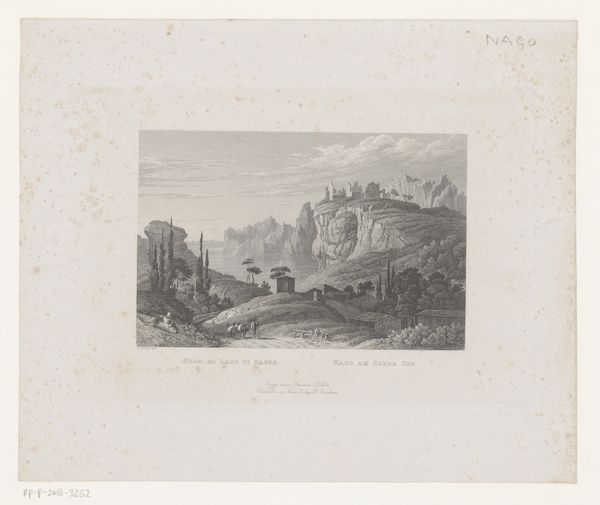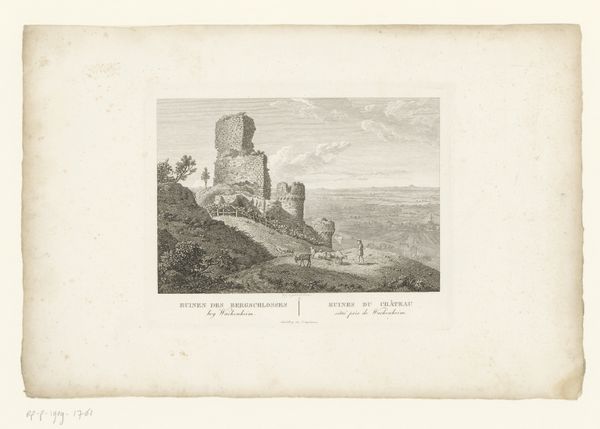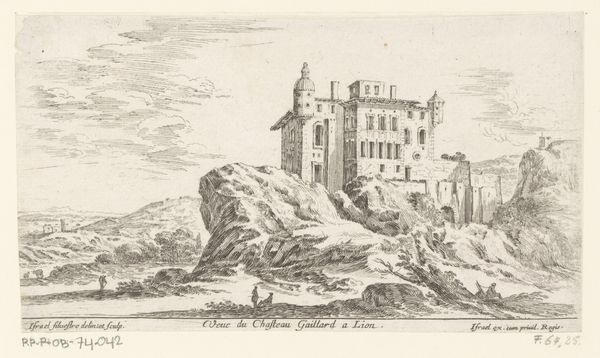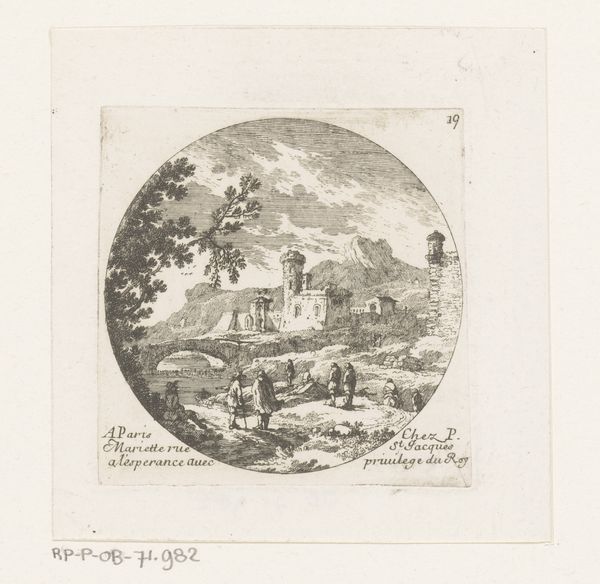
print, intaglio, engraving
#
baroque
# print
#
intaglio
#
landscape
#
engraving
Dimensions: height 115 mm, width 116 mm
Copyright: Rijks Museum: Open Domain
Editor: This is Israel Silvestre's "View of the Pierre Scize Castle," an engraving from sometime between 1645 and 1691. It’s so detailed and precise; the composition inside the circle almost feels like a stage. What are your thoughts when you look at this piece? Curator: I immediately consider the political function of such imagery during this period. Silvestre's prints, widely circulated, helped construct and disseminate a certain vision of French power and territorial reach under Louis XIV. The choice of a castle, prominently positioned on a craggy precipice, isn't just picturesque. Editor: How so? Curator: Well, castles inherently symbolize authority and control. In a way, the landscape itself—the rock, the river—becomes an extension of that authority. Silvestre is showcasing not just the physical place, but also the power relations embedded within it. How do you think the public at the time perceived this imagery? Editor: Perhaps with a sense of awe and admiration for the French crown’s dominion. So, beyond the artistic skill, there's a deliberate attempt to shape public opinion through art? Curator: Precisely. And the strategic distribution of these prints was a critical part of that. The intaglio process allowed for a large print run of these works which increased the reach to new and existing audiences. Editor: That’s fascinating. It shifts the way I see landscape art; it is more than pretty scenery. I will never look at this type of work again without thinking about that impact. Curator: Indeed. Understanding art’s role in shaping perceptions is crucial.
Comments
No comments
Be the first to comment and join the conversation on the ultimate creative platform.
